

FREE WEBINAR: Media Literacy: Librarian Train-the-Trainer Workshop (2 part series) Join PEN America and The EveryLibrary Institute for an exclusive two-part media literacy training for library educators now available on demand!
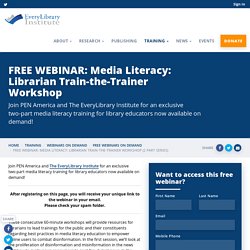
After registering on this page, you will receive your unique link to the webinar in your email. Please check your spam folder. Guidelines for Converting Existing Instructor-led Training to the Virtual Classroom [Video] Melissa Grey Satterfield Melissa has been a course leader with Langevin since 2000.
![Guidelines for Converting Existing Instructor-led Training to the Virtual Classroom [Video]](http://cdn.pearltrees.com/s/pic/th/guidelines-converting-220861993)
She graduated from the University of Nevada where she studied broadcast communications. During her college years, Melissa worked as an on-air personality for several radio and TV stations in Las Vegas. She’s always been a bit of a performer, which is probably why training is such a good fit for her. Before coming to Langevin, she was a senior training specialist and course developer for an organization based in L.A. All Posts by the author. Effective Teaching Strategies: Six Keys to Classroom Excellence. What are makes an effective teacher?

This particular list of teaching characteristics appears in an excellent book that is all but unknown in the states, Learning to Teach in Higher Education, by noted scholar Paul Ramsden. In the case of what makes teaching effective, he writes, “…a great deal is known about the characteristics of effective university teaching. It is undoubtedly a complicated matter; there is no indication of one ‘best way,’ but our understanding of its essential nature is both broad and deep.” (p. 88-89). He organizes that essential knowledge into these six principles, unique for the way he relates them to students’ experiences. TEAL Center Fact Sheet No. 4: Metacognitive Processes. 5 Highly Effective Teaching Practices.
I remember how, as a new teacher, I would attend a professional development and feel inundated with new strategies.

The Padagogy Wheel … it's a Bloomin' Better Way to Teach - In Support of Excellence. When I received the invitation from the new Lee Kong Chian School of Medicine at the Nanyang Technological University in Singapore, I decided to completely upgrade two seminar workshops.
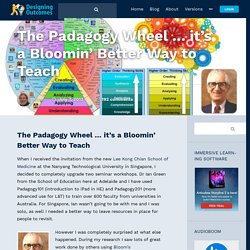
Introduction to the Padagogy Wheel. The Best Resources For Helping Teachers Use Bloom’s Taxonomy In The Classroom. Bloom’s & SOLO ‘are not Just Colorful Posters we Hang on the Wall’ is my two-part series at Education Week Teacher.

Bloom’s Taxonomy is talked about a lot in educational circles. However, if you believe a recent survey of visits to 23,000 U.S. classrooms, the higher-order thinking skills it’s ideally designed to promote doesn’t get much use. And I can understand why. Blooms taxonomy chart. Pinterest. Pinterest. Pinterest. Home - Science of Learning Research Centre. How to praise your child: why simply saying 'well done' is not helpful. How do you react when you hear expressions like “well done”, “another A grade”, “aren’t you clever” and “great work”?
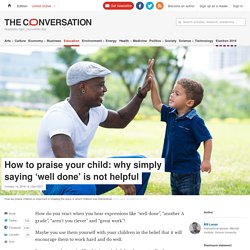
Maybe you use them yourself with your children in the belief that it will encourage them to work hard and do well. It turns out that praise like this is not helpful and can actually damage children. 8 Flipped Classroom Benefits For Students And Teachers - eLearning Industry. 7 Neuroscience Fundamentals For Instructional Designers - eLearning Industry.
The brain is a beautiful thing.
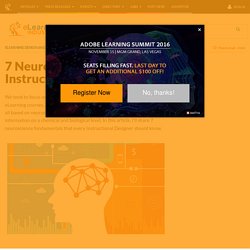
It's also one of the most complex and complicated structures known to man. Every emotion, thought, and memory involves countless chemical reactions and neural pathways. To learn new information, our minds must be primed for the task. Which is why eLearning professionals should consider these 7 neuroscience fundamentals for their Instructional Design. 1. Search for "Spaced eLearning" - eLearning Industry. Carol Tomlinson. Differentiating Your Classroom with Ease - The Brown Bag Teacher. For me, differentiating no longer means creating separate games/activities/learning targets.
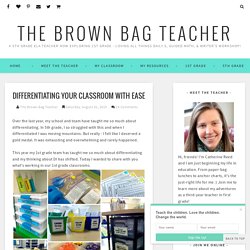
Research – Flipped Learning Simplified. Welcome. Connecting educators to what works. Students are not hard-wired to learn in different ways – we need to stop using unproven, harmful methods. In our series, Better Teachers, we’ll explore how to improve teacher education in Australia.
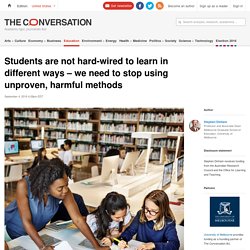
We’ll look at what the evidence says on a range of themes including how to raise the status of the profession and measure and improve teacher quality. In health there are well-established protocols that govern the introduction of any new drug or treatment. Of major consideration is the notion of doing no harm. In education there are no such controls and plenty of vested interests keen to see the adoption of new strategies and resources for a variety of ideological and financial reasons.
Teachers need to be critical consumers of research – as with medicine, lives are also at stake – yet with the best will in the world and without the knowledge and time to do so, decisions may be made to adopt new approaches that are not only ineffectual, but can actually do harm. Lack of evidence. Think. Learn. Innovate.
Kolb's learning styles, experiential learning theory, kolb's learning styles inventory and diagram. We have some very exciting plans for Businessballs. Later this month, we will be launching a new visual identity, refreshing the design of the site and adding lots of new functionality to enhance your learning experience.